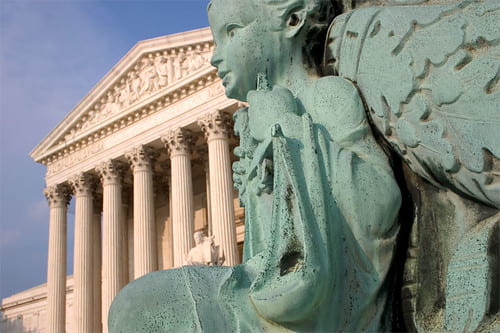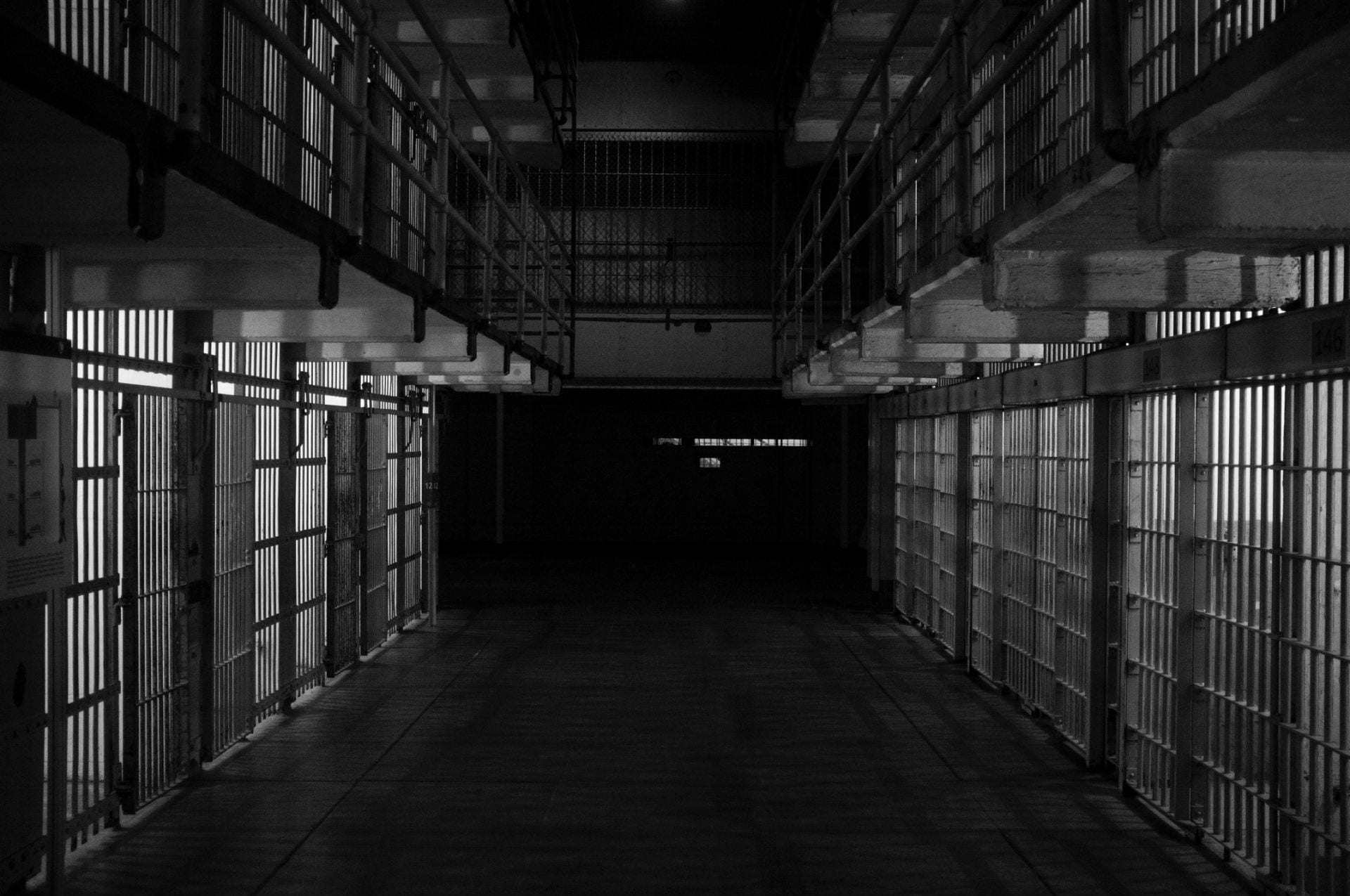
As Brady Mistic got out of his car, he was immediately met with the blinding glare of police lights. Being a person with deafness, Brady relied mostly on his sight to interact with the world around him, so the bright light was confusing to say the least. He moved towards the light to inquire about the disturbance. Within the next seven seconds, Brady would find himself shoved to ground and tased by the police as they barked commands that were completely inaccessible to him, even as he tried to communicate that he was deaf. Within seven seconds, Brady acquired three charges, including resisting arrest, and was sentenced to four months in prison. Within seven seconds, the police officers’ inability to identify the need for, and establish, alternate forms of communication lead to a physical altercation and incarceration. Although these charges were waived after almost two years, Brady’s story is indicative of a widespread, disproportionate impact of the justice system on people with disabilities.
In fact, while only 20% of Americans have disabilities, 32% of federal inmates and 40% of jail inmates report at least one disability. The difference in these numbers is no coincidence. In this and a subsequent article, we will see that people with disability are not only overrepresented in prison and jail systems, but also treated unfairly at every step in the process of incarceration and reintegration into society. This article connects Mistic’s inaccessible encounter with the police with a broader, systemic lack of accommodations in the criminal justice system; the second will focus on the school-to-prison pipeline for kids with disabilities and the experiences of people with intellectual and development disabilities.
Mistic and Accessibility in the Criminal Justice System
Mistic’s encounter with the police was not the only incident of law enforcement getting into a violent altercation due to their inability to communicate with a disabled individual. In 2017, Oklahoma City police fatally shot Magdiel Sanchez, an individual with deafness, after he failed to respond to verbal commands to drop the stick in his hand and get on the ground. He was later found to have not been involved in the hit-and-run case for which the police were called. Witnesses who were present at the time of the event were even yelling to the police officers, saying that Sanchez was deaf and could not understand their spoken words. The lack of appropriate communication and the haste in action which is evident in both of these cases points to an underlying deficit in police training. Despite the fact that individuals with any type of disability are legally entitled to receive the same access to legal enforcement services as people without disabilities, most of the training around disability and crisis intervention training programs are not mandatory and are focused on psychological disabilities. Law enforcement training is not comprehensive with regards to disability and fails to equip officers with the necessary skills to interact with people who have intellectual, developmental, or other types of disabilities, which can potentially lead to fatal consequences.
Sadly, the lack of access in Mistic’s interaction with the criminal justice system did not end at his encounter with the police. Mistic was denied an interpreter when interacting with his lawyer while in jail. Like other aspects of Mistic’s case, this too points to an institutionalized barrier that prevents people with disabilities from being treated justly. Inaccessibility in the court and prison system is rampant. This was evident in the case of Abreham Zemedagegehu, an Ethiopian man with deafness whose first language was Ethiopian Sign Language. He was not allowed an interpreter during his six weeks in jail, making it very difficult for him to hear announcements for meals, contact his friends and family, and receive medication for his back pain.
Through multiple lawsuits over the years, prisoners with deafness reported not being able to understand the prison-wide safety instructions, to take part in classes in prison, and to defend themselves in disciplinary proceedings because a sign language interpreter was not present. In 2010, a prison in Virginia became the first in the country to have a videophone after it settled a lawsuit by a group of deaf inmates. It is difficult to imagine that this basic mode of accessible communication for people with deafness was unavailable at one point in any prison in the US and is still not available in many prisons. The lack of accessible communication methods impacts the success of people with disability as they reintegrate into society as well. One individual with blindness had the opportunity to enroll in community college courses but did not receive appropriate accommodations during classes. Another individual with a disability sought to find out how to apply for social security benefits but was denied information by their counselor, who believed they should apply for a job instead.

Access to Health Services
Decreased access to medication and health services in prisons, as Zemedagegehu experienced, disproportionally impacts people with disabilities, risking the deterioration of health problems. When 91% of jailers report they have in their facilities individuals with serious psychological disabilities who are at risk of committing suicide, it becomes imperative – a matter of life or death – to ensure adequate health services are delivered in time. The status of accommodations is no better, as many prisons deemed essential accommodations (including wheelchair, prosthetics, exercise equipment, other assistive technology) as no longer “medically necessary” in order to cut costs. Health services are placed further out of the reach of inmates due to exorbitant co-pay rates, which can be as high as a month’s labor, and additional fees incurred by prosthetics and other accommodation. The results of these factors is best portrayed in a Bureau of Justice System study which looked into health issues of prisoners and jail inmates. Only two-thirds of participants reported receiving necessary medical treatment, whereas 11% reported that their illness was not being treated because they were not being given medication. While the overrepresentation of people with disabilities in jails and prisons may largely be attributed to unjust treatment of people with disabilities, it is possible that the conditions within the jails and prisons, including the lack of access to health resources, are contributing to the development of disabilities in inmates.
Perhaps the most shocking experience of Zemedagegehu during his time in jail is that he was forced to receive an injection, which he later found out was a tuberculosis test, after refusing to sign a medical consent form because it was not presented in a way that he could comprehend. This blatant human rights violation, of forced medical procedures and ignorance of patient autonomy, underscores the necessity of sweeping changes in the jail and prison system’s treatment of individuals with disabilities.
Inaccessibility in the justice system, however, is an issue not only for arrested and incarcerated individuals with disabilities, but also to citizens seeking justice. According to a Bureau of Justice study, people with disabilities are victims of violence at twice the rate as people without disabilities. Clearly, individuals with disabilities stand to benefit from the services offered by the court system, services which they are entitled to but cannot always access due to the failure of the criminal justice system in being inclusive to all members of the community.
The issues of inaccessibility discussed in this article violate the rights afforded to all individuals, including article seven of the Human Rights Declaration which promises that everyone is “entitled without any discrimination to equal protection of the law”. Reforms to the criminal justice system need to take into account the needs of people with disabilities at every level, from law enforcement to court systems to jails and prisons. Individual citizens can contribute to pushing for such reforms as well. Find your local legislators and advocate for issues of access in the criminal justice system by writing to or phoning their office. Recent prison reforms in Alabama, including a bill allocating approximately $800 billion to the construction of two new facilities that will reduce overcrowding in prisons, offer hope for progress. Whether or not accessibility becomes a priority in the future depends on you and I to organize, stand as allies, and demand change.
